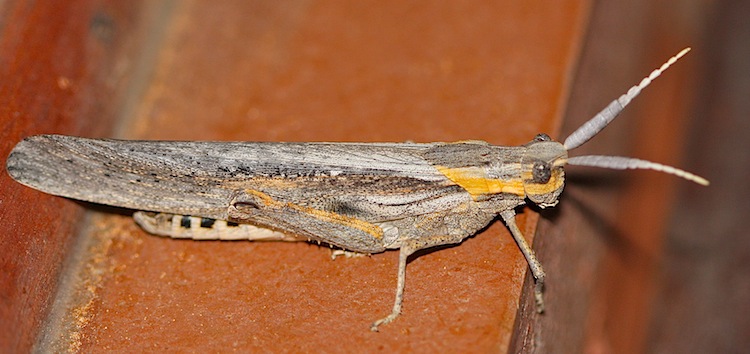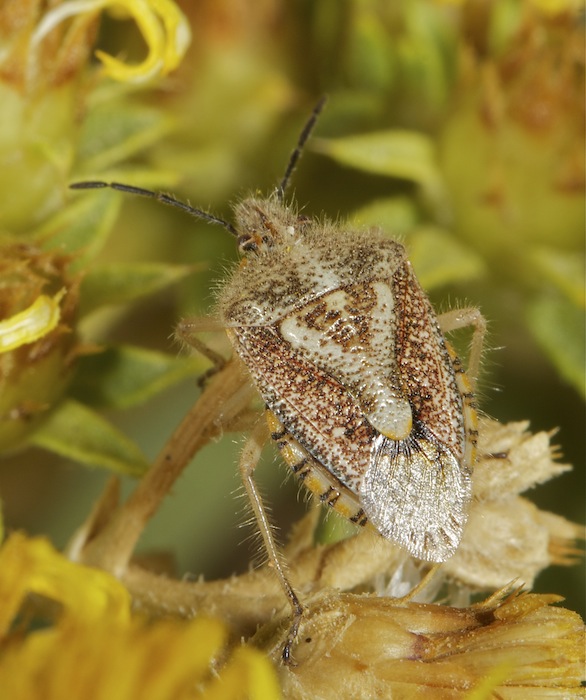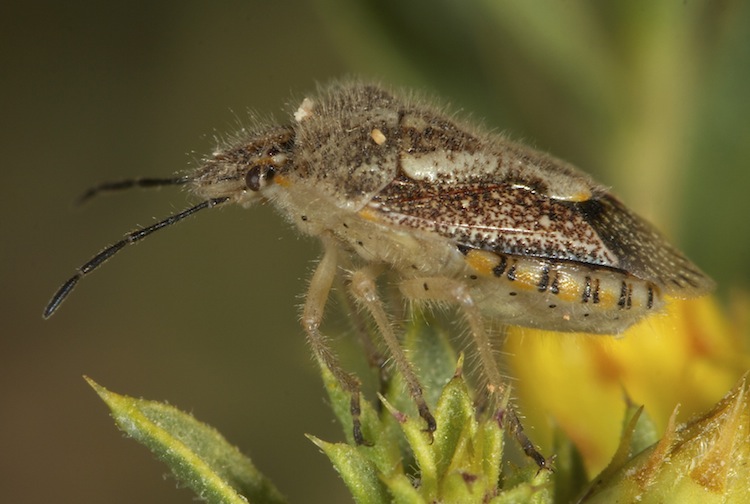Insect or Invertebrates Identification - DONE
Moderator: Klipspringer
- Lisbeth
- Site Admin
- Posts: 65626
- Joined: Sat May 19, 2012 12:31 pm
- Country: Switzerland
- Location: Lugano
- Contact:
Re: Insect or Invertebrates Identification
Yep! But I have just let it out 
"Education is the most powerful weapon which you can use to change the world." Nelson Mandela
The desire for equality must never exceed the demands of knowledge
The desire for equality must never exceed the demands of knowledge
Re: Insect or Invertebrates Identification
Agonoscelis puberula
Quick response here and there we go towards 100,000
and there we go towards 100,000
Does not look like Sunflower Seed Bug Agonoscelis versicoloratus to me.
Will check if there are others in the genus found in SA
Quick response here
Does not look like Sunflower Seed Bug Agonoscelis versicoloratus to me.
Will check if there are others in the genus found in SA
Re: Insect or Invertebrates Identification
http://www.projectnoah.org/spottings/38344186
http://www.projectnoah.org/spottings/17924240



versicolor is also in the field guide
http://www.projectnoah.org/spottings/17924240
versicolor is also in the field guide
Re: Insect or Invertebrates Identification
http://www.ndsu.nodak.edu/ndsu/rider/Pe ... scelis.htm
A. erosa is reported from the Kalahari
puberula:
Body broadly oval; tibiae entirely pale
Dorsum of abdomen black; apex of scutellum not reflexed; head not longer than broad; second segment of antennae not shorter than third; tarsi more or less blackish or fuscous; 8.5-9 mm in length (Eritrea to South Africa)
erosa:
Membrane (with exception of the usual, dark spot at inner angle) hyaline and with veins pale; 14-14.5 mm in length
Dorsum of abdomen totally black; last tergite of male with long median process directed caudad (Sierra Leone to South Africa)
venosa:
Body narrowly oval; superior surfaces of tibiae black at base
Rostrum not reaching to apex of abdomen; head and pronotum of equal length; second segment of antennae distinctly shorter than third; dorsum of abdomen entirely rufous testaceous; 10-11 mm in length (Ethiopia to South Africa)
versicoloratus:
Dorsum of abdomen reddish, with base and apex black; second and third segments of antennae thicker, second segment distinctly shorter than third; head shorter, not strongly tapering anteriorly; head and pronotum not strongly pilose; tarsi and often part of tibiae fuscous or blackish; 11-14 mm in length
head about 1.2 times as long as broad, lateral margins nearly always distinctly insinuated in front of eyes; scutellum 1.3-1.4 times as long as broad, apical part usually narrow ligulate; lateral lobes of pygophore in lateral view narrow, concealed by bluntly produced elevated lateral margin of pygophore basally; paramere with T-shaped apex (both apical angles sharp)
Mike Picker, Charles Griffiths, Alan Weaving:
Agonoscelis versicoloratus: Sunflower Seed Bug Identification: Small (body length 10-12 mm), with black-striped head, yellow tip of scutellum, and exposed margins of abdomen striped in yellow.
Agonoscelis versicolor: http://ethiopia.ipm-info.org/insect_pes ... escens.htm
The adults are shield shaped bugs. They are up to 14 mm long and 7 mm wide. The upper side has a straw yellow to reddish brown colour with many brown punctures. The underside is yellowish brown with black spiracles. The black antennae are 5 segmented. The legs are yellowish brown. The fore wings have a thickened basal part which is bright red on the underside. The top of the fore wing is membranous with black veins.
A. erosa is reported from the Kalahari
puberula:
Body broadly oval; tibiae entirely pale
Dorsum of abdomen black; apex of scutellum not reflexed; head not longer than broad; second segment of antennae not shorter than third; tarsi more or less blackish or fuscous; 8.5-9 mm in length (Eritrea to South Africa)
erosa:
Membrane (with exception of the usual, dark spot at inner angle) hyaline and with veins pale; 14-14.5 mm in length
Dorsum of abdomen totally black; last tergite of male with long median process directed caudad (Sierra Leone to South Africa)
venosa:
Body narrowly oval; superior surfaces of tibiae black at base
Rostrum not reaching to apex of abdomen; head and pronotum of equal length; second segment of antennae distinctly shorter than third; dorsum of abdomen entirely rufous testaceous; 10-11 mm in length (Ethiopia to South Africa)
versicoloratus:
Dorsum of abdomen reddish, with base and apex black; second and third segments of antennae thicker, second segment distinctly shorter than third; head shorter, not strongly tapering anteriorly; head and pronotum not strongly pilose; tarsi and often part of tibiae fuscous or blackish; 11-14 mm in length
head about 1.2 times as long as broad, lateral margins nearly always distinctly insinuated in front of eyes; scutellum 1.3-1.4 times as long as broad, apical part usually narrow ligulate; lateral lobes of pygophore in lateral view narrow, concealed by bluntly produced elevated lateral margin of pygophore basally; paramere with T-shaped apex (both apical angles sharp)
Mike Picker, Charles Griffiths, Alan Weaving:
Agonoscelis versicoloratus: Sunflower Seed Bug Identification: Small (body length 10-12 mm), with black-striped head, yellow tip of scutellum, and exposed margins of abdomen striped in yellow.
Agonoscelis versicolor: http://ethiopia.ipm-info.org/insect_pes ... escens.htm
The adults are shield shaped bugs. They are up to 14 mm long and 7 mm wide. The upper side has a straw yellow to reddish brown colour with many brown punctures. The underside is yellowish brown with black spiracles. The black antennae are 5 segmented. The legs are yellowish brown. The fore wings have a thickened basal part which is bright red on the underside. The top of the fore wing is membranous with black veins.
Re: Insect or Invertebrates Identification
You are one amazing ID wizard Toko! That was FAST 

What about this one?
Rain Locust Lamarckiana sp.

KTP
What about this one?
Rain Locust Lamarckiana sp.

KTP




